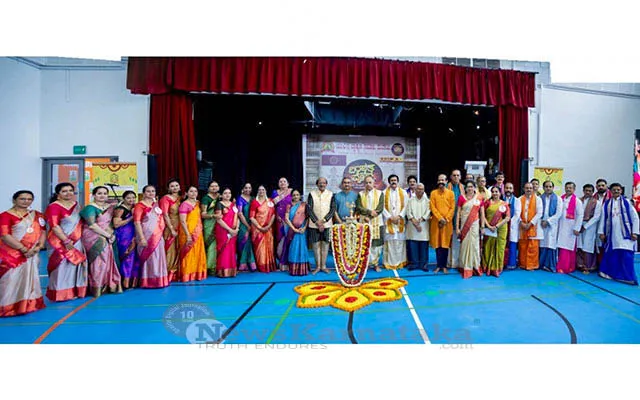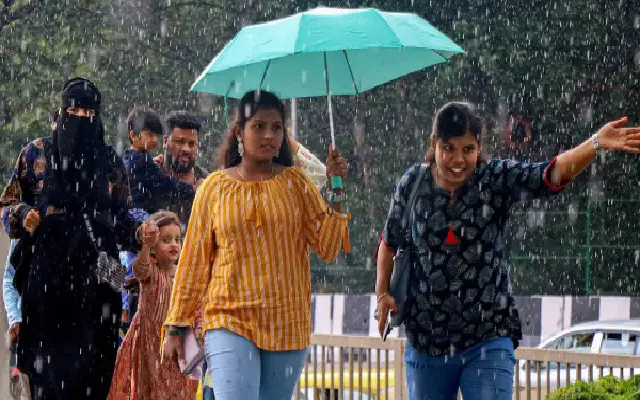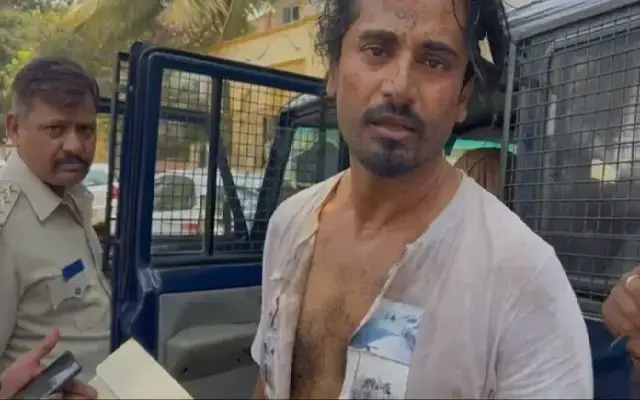
The Committee for Draft National Education Policy (Chair: Dr. K. Kasturirangan) submitted its report on May 31, 2019, to the government. The Committee was constituted by the Ministry of Human Resource Development in June 2017. The report proposes an education policy, which seeks to address the challenges of (i) access, (ii) equity, (iii) quality, (iv) affordability, and (v) accountability faced by the current education system. The draft Policy provides for reforms at all levels of education from school to higher education. The draft of the New Education Policy 2019 is available at https://mhrd.gov.in/relevant-documents
Suggestions and Comments were invited by the HRD Ministry till 31st July 2019 @ nep.edu@nic.in but the date may be extended.
As citizens, it is our bounden duty to read, understand and give in our suggestions and comments to the MHRD. Newskarnataka.com requests all its readers especially parents, educationists and education providers to take time out to do the needful
Here are the key suggestions made by the draft document:
1. School Education
a. Early Childhood Care and Education: The draft Policy recommends developing a two-part curriculum for early childhood care and education. This will consist of: (i) guidelines for up to three-year-old children (for parents and teachers), and (ii) educational framework for three to eight-year-old children.
b. The Right to Education Act, 2009 (RTE Act): The draft Policy recommends extending the ambit of the RTE Act to include early childhood education and secondary school education. This would extend the coverage of the Act to all children between the ages of three to 18 years. It also proposes a no detention policy till class 8.
c. Curriculum framework: The draft education policy proposes to restructure school education as a 5-3-3-4 design comprising: (i) five years of foundational stage (three years of pre-primary school and classes one and two), (ii) three years of preparatory stage (classes three to five), (iii) three years of middle stage (classes six to eight), and (iv) four years of secondary stage (classes nine to 12).
d. School exam reforms: The draft Policy proposes State Census Examinations in classes three, five and eight. Further, it recommends restructuring the board examinations to test only core concepts, skills, and higher order capacities.
e. School infrastructure: The draft Policy recommends that multiple public schools should be brought together to form a school complex. A complex will consist of one secondary school (classes nine to twelve) and all the public schools in its neighbourhood that offer education from pre-primary till class eight. The school complexes will also include anganwadis, vocational education facilities, and an adult education centre.
f. Teacher management: The draft Policy recommends that teachers should be deployed with a particular school complex for at least five to seven years. For teacher training, the existing B.Ed. programme will be replaced by a four-year integrated B.Ed. programme that combines high-quality content, pedagogy, and practical training. Teachers will be required to complete a minimum of 50 hours of continuous professional development training every year.
g. Regulation of schools: The draft Policy suggests creating an independent State School Regulatory Authority for each state that will prescribe basic uniform standards for public and private schools. The Department of Education of the State will formulate policy and conduct monitoring and supervision.
2. Higher Education
The Draft Policy aims to increase Gross Enrolment Ratio (GER) to 50% by 2035 from the current level of about 25.8%. Key recommendations in this regard include:
a. Regulatory structure and accreditation: The draft policy proposes setting up a National Higher Education Regulatory Authority (NHERA) to replace all the existing individual regulators in higher education, including professional and vocational education. The role of the University Grants Commission (UGC) will be limited to providing grants to higher educational institutions. The draft Policy recommends separating NAAC from the UGC into an independent and autonomous body. NAAC will function as the top level accreditor and will issue licenses to different accreditation institutions, who will assess higher educational institutions once every five to seven years. All existing higher education institutions should be accredited by 2030.
b. Establishment of new higher educational institutions: The draft Policy proposes that higher education institutions be set up through a Higher Education Institution Charter from NHERA on the basis of a transparent assessment of certain specified criteria. All such newly constituted higher educational institutions must receive accreditation as mandated by NHERA within five years of being established.
c. Restructuring of higher education institutions: Higher education institutions will be restructured into three types: (i) research universities focusing equally on research and teaching; (ii) teaching universities focusing primarily on teaching; and (iii) colleges focusing only on teaching at undergraduate levels. All such institutions will gradually move towards full autonomy – academic, administrative, and financial.
d. Establishing a National Research Foundation: The draft Policy recommends establishing a National Research Foundation, an autonomous body, for funding, mentoring and building the capacity for quality research in India. The Foundation will consist of four major divisions: sciences, technology, social sciences, and arts and humanities, with the provision to add additional divisions. The Foundation will be provided with an annual grant of Rs 20,000 crore (0.1% of GDP).
e. A liberal approach to degrees as in the west: The draft Policy recommends making undergraduate programmes interdisciplinary by redesigning their curriculum to include: (a) a common core curriculum and (b) one/two area(s) of specialization. Students will be required to choose an area of specialization as ‘major’, and an optional area as ‘minor’. Four-year undergraduate programmes in Liberal Arts will be introduced and multiple exit options with appropriate certification will be made available to students. (Certificate to a degree)
f. Professional development of faculty: The draft Policy recommends the development of a Continuous Professional Development programme and introduction of a permanent employment (tenure) track system for faculty in all higher education institutions by 2030. Further, a desirable student-teacher ratio of not more than 30:1 must be ensured.
g. Autonomy to design curricula: The draft policy recommends that all higher education institutions must have complete autonomy on curricular, pedagogical and resource-related matters.
3. Education Governance:
a. Renaming the MHRD and establishment of a National Education Commission: The draft policy suggests that the Ministry of Human Resources and Development must be renamed as the Ministry of Education in order to bring the focus back on education. It envisages the establishment of a National Education Commission or Rashtriya Shiksha Aayog, as an apex body for education, to be headed by the Prime Minister. This body will be responsible for developing, implementing, evaluating, and revising the vision of education in the country on a continuous and sustained basis.
b. Spending on Education: The Draft Policy reaffirmed the commitment of spending 6% of GDP as public investment in education.
c. National Mission on Education through information and communication technology to be set up: A National Education Technology Forum will also be set up under the Mission, as an autonomous body, to facilitate decision making on the induction, deployment, and use of technology.
d. National Repository on Educational Data: A National Repository will be set up to maintain all records related to institutions, teachers, and students in digital form. Further, a single online digital repository will be created where copyright-free educational resources will be made available in multiple languages.
4. Vocational Education:
a. Vocational courses: The Draft policy says that all school students must receive vocational education in at least one vocation in grades nine to 12 aligned to the competency levels under the existing National Skills Qualifications Framework. Higher Education Institutions must also offer vocational courses that are integrated into undergraduate education programmes. A Committee will be set up to work out the steps that need to be taken towards achieving the above goals.
5. Language Policy:
a. The medium of Instruction: The draft policy recommends that the medium of instruction must either be the home language/mother tongue/local language till grade five, and preferable till grade eight, wherever possible.
b. Three language formula: The draft Policy recommended that the existing three language formula be continued and flexibility in the implementation of the formula should be provided. To provide flexibility in the choice of language, students who wish to change one or more of their three languages may do so in grade six or grade seven, subjected to the condition that they are still able to demonstrate proficiency in three languages in their modular board examinations.
Please read the full document and please send in your suggestions and comments to the MHRD by 31st July 2019 @ nep.edu@nic.in
With inputs from https://www.prsindia.org/


















